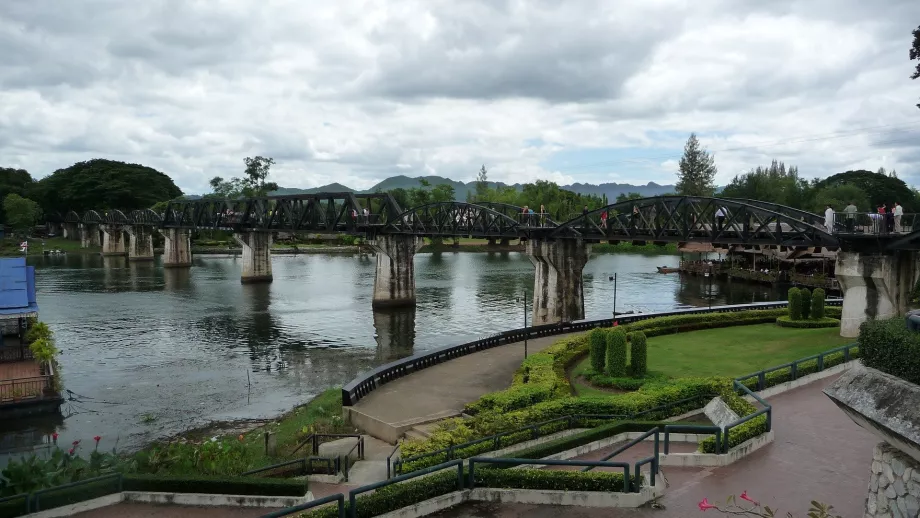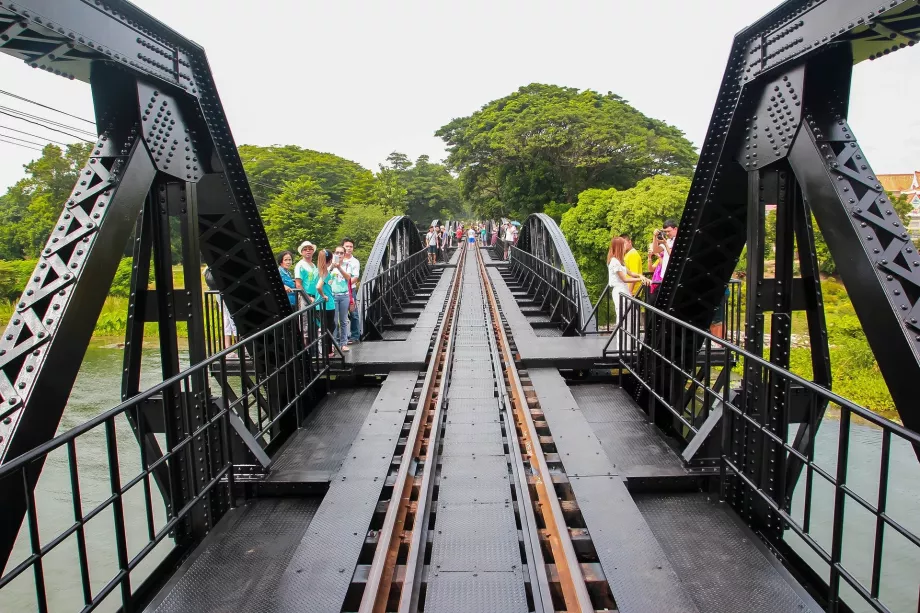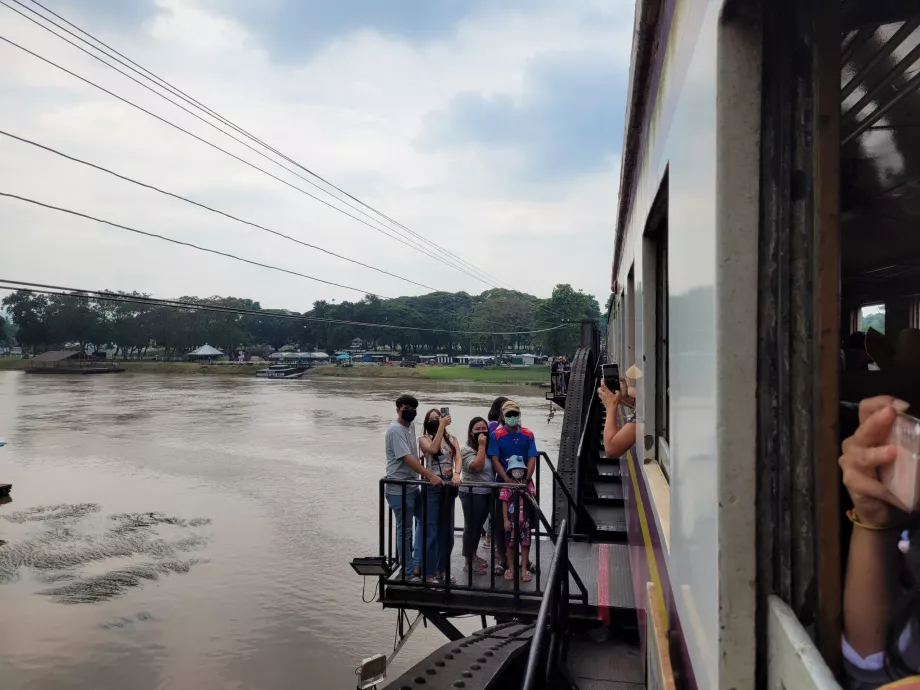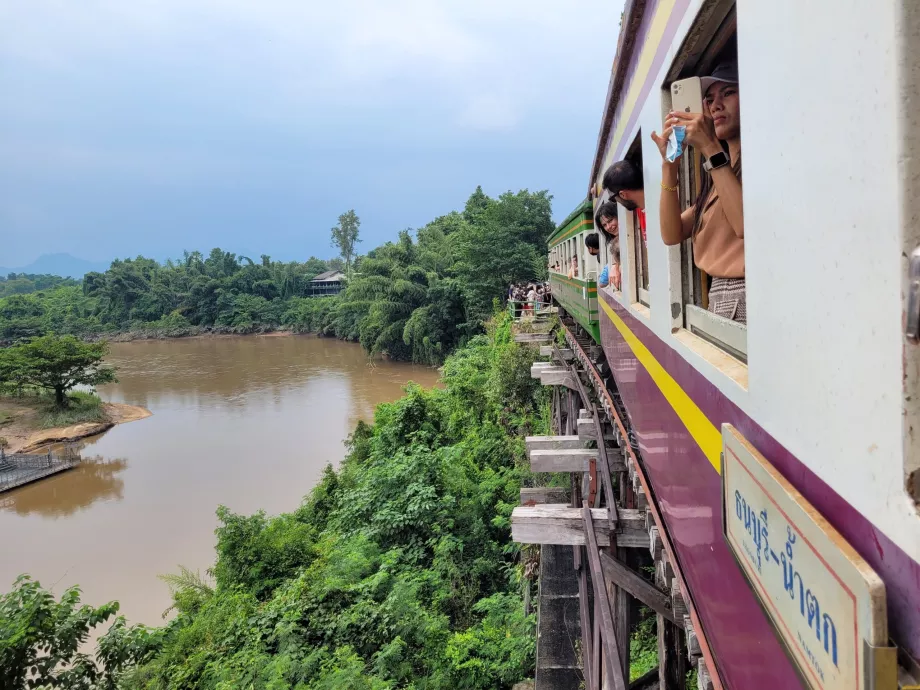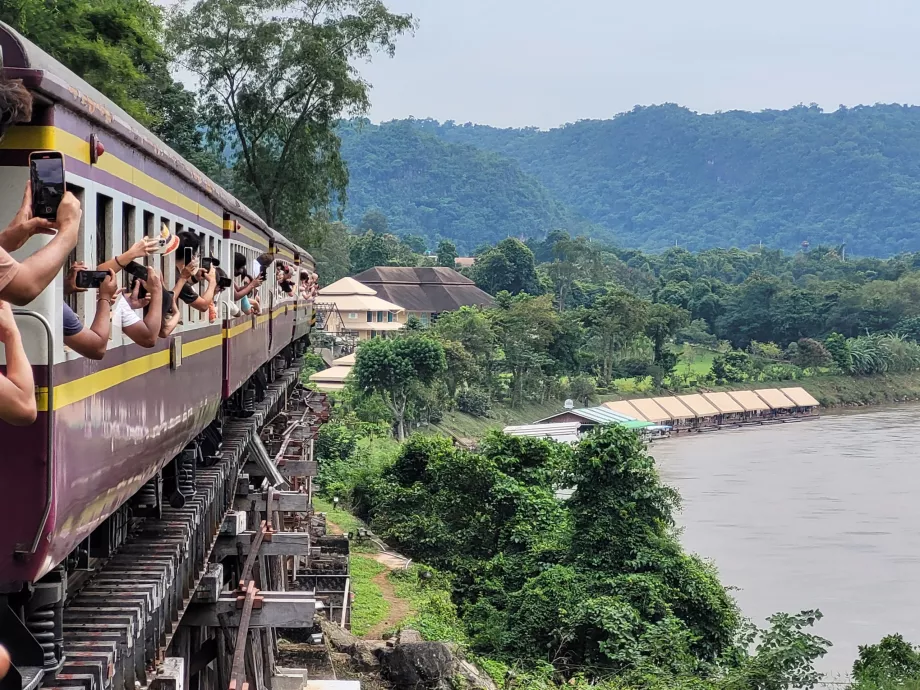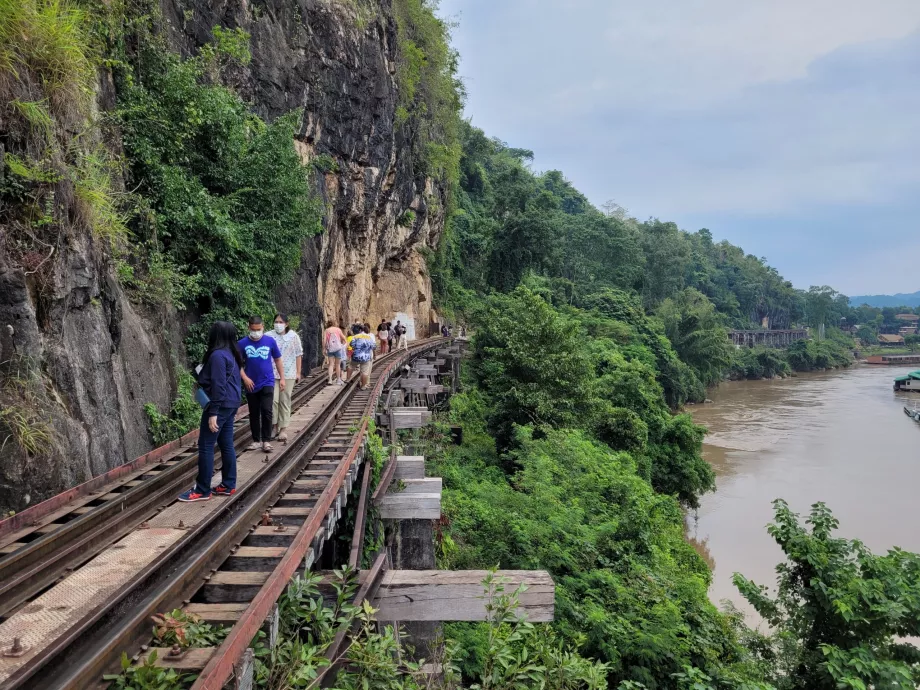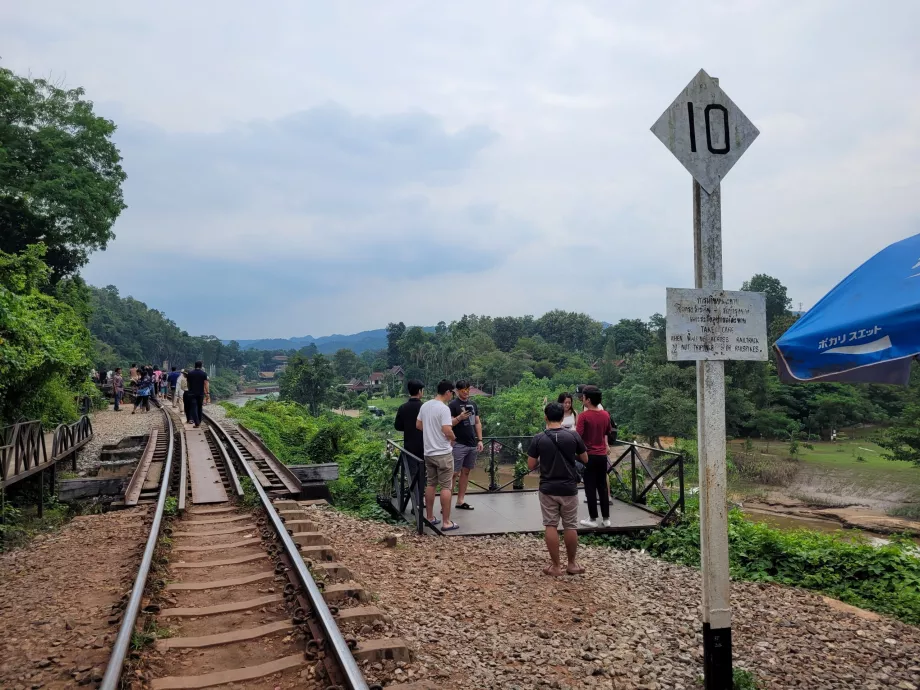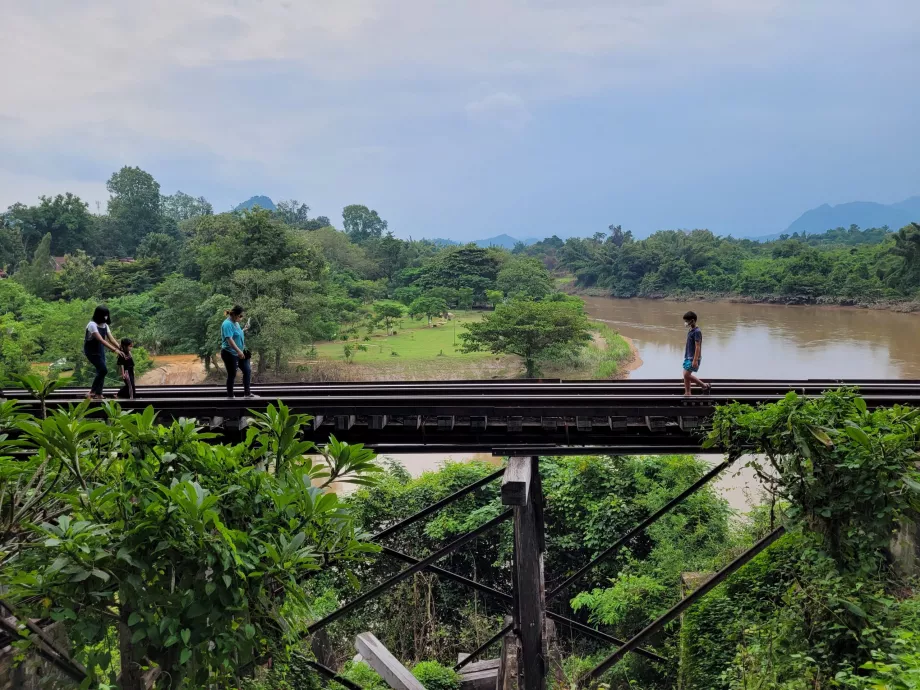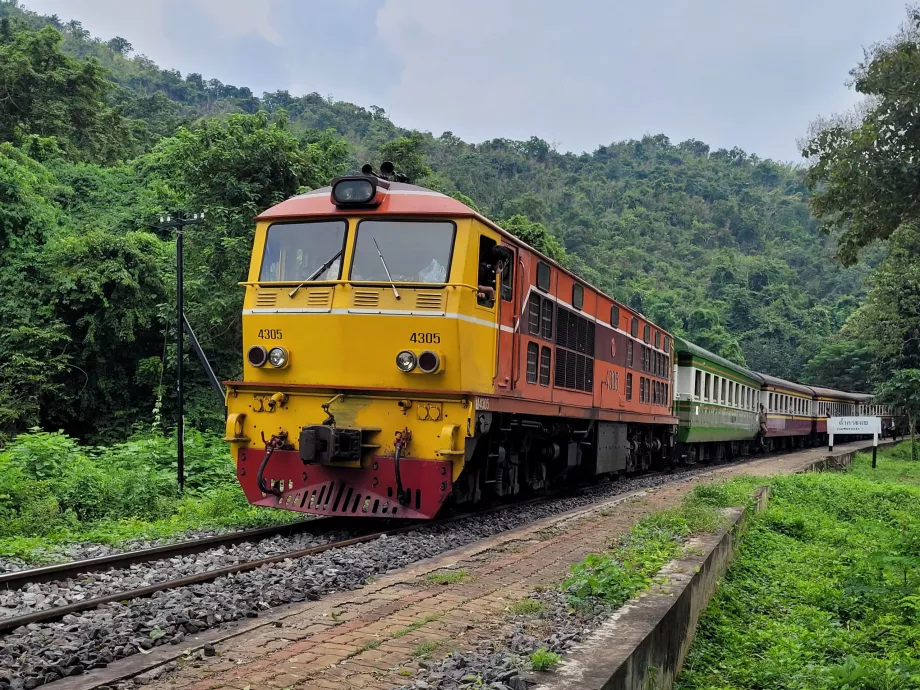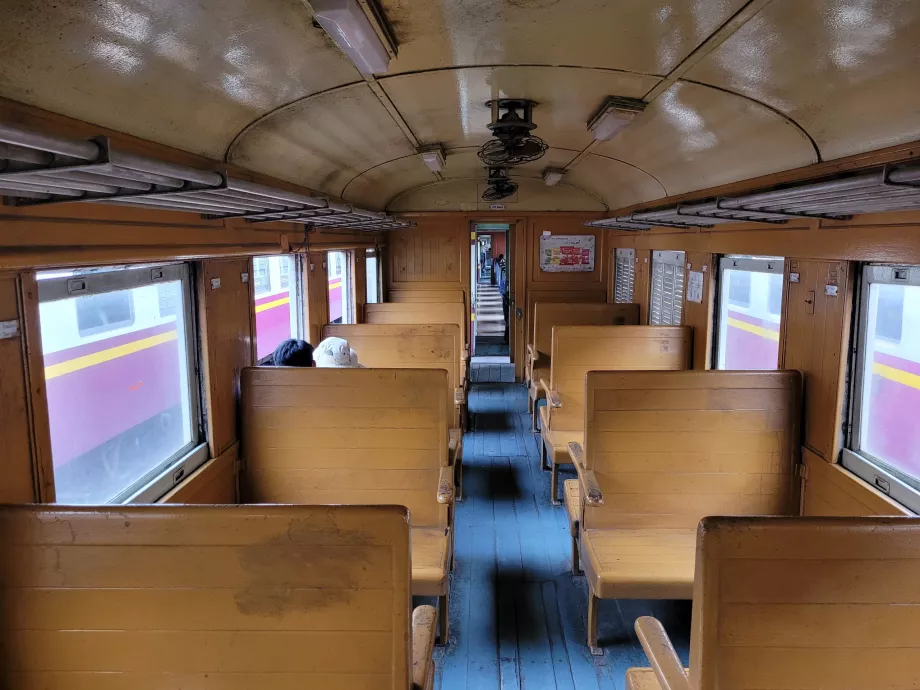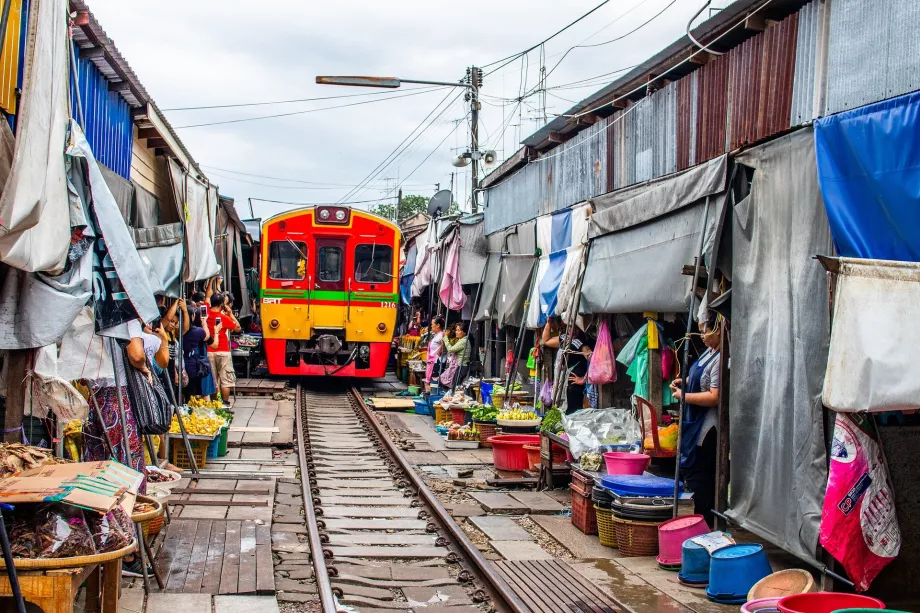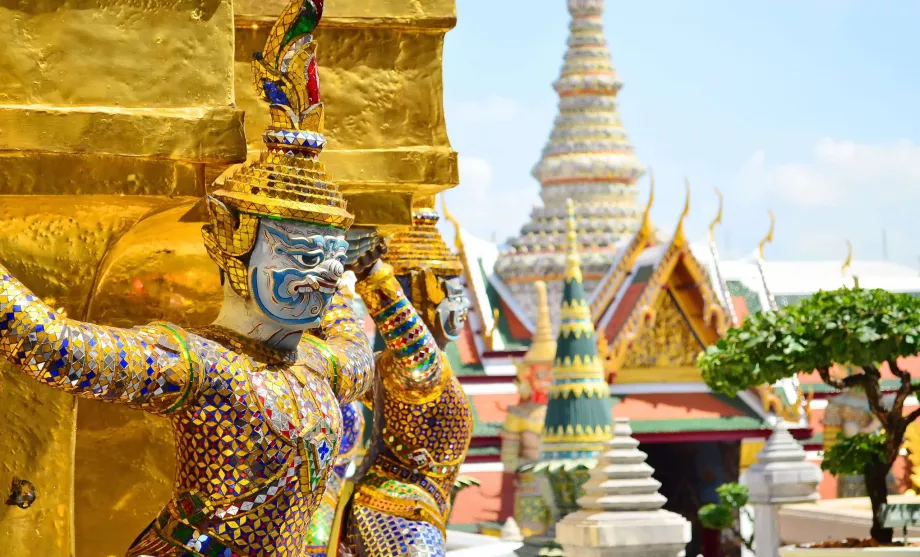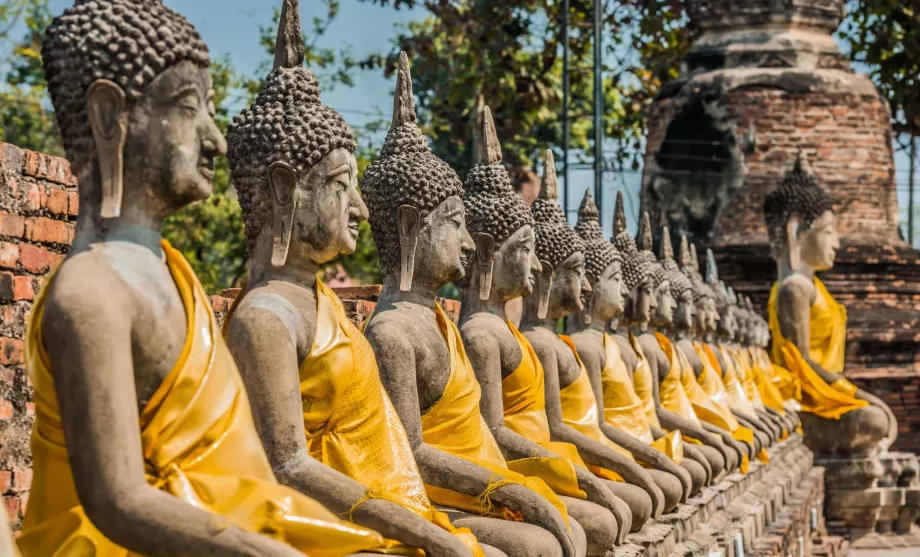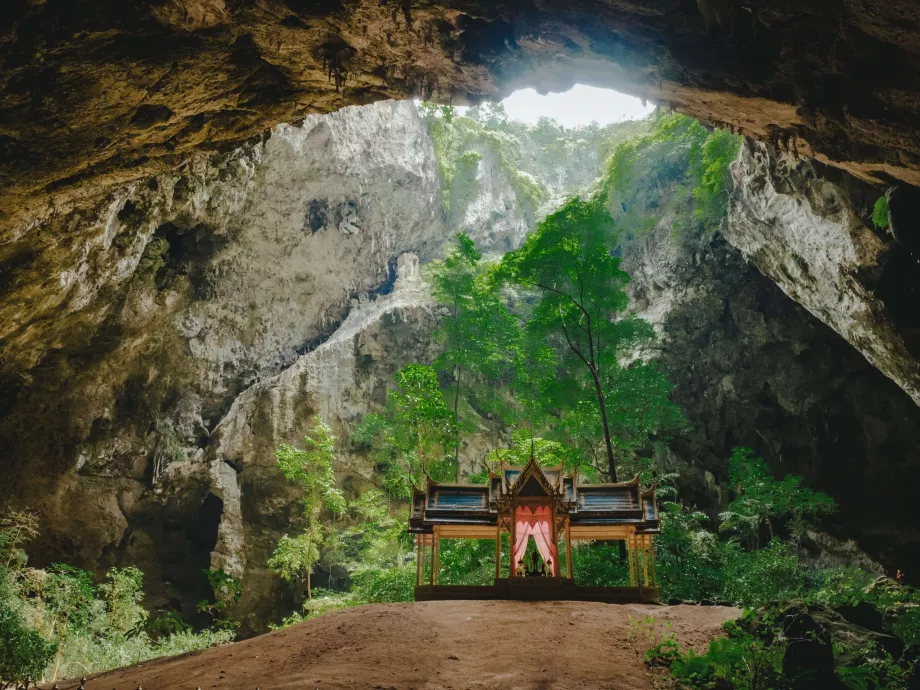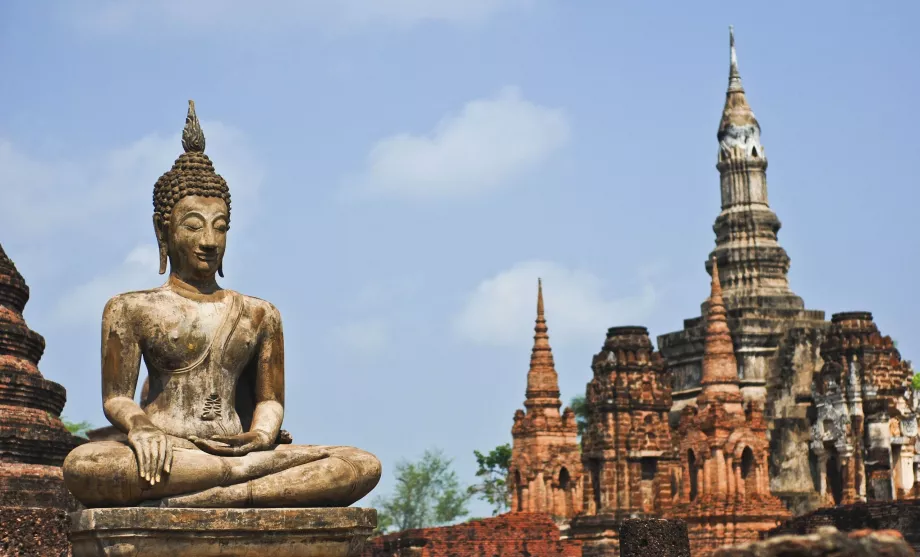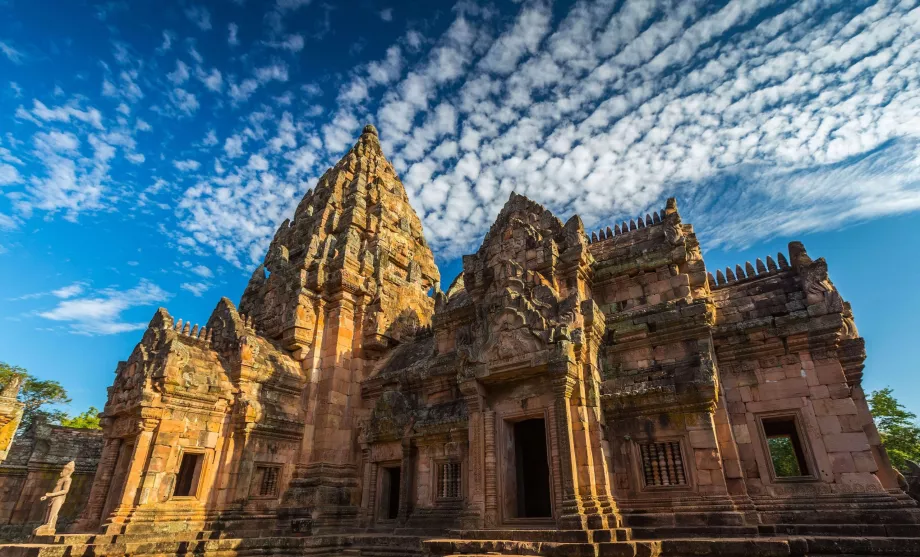Kanchanaburi
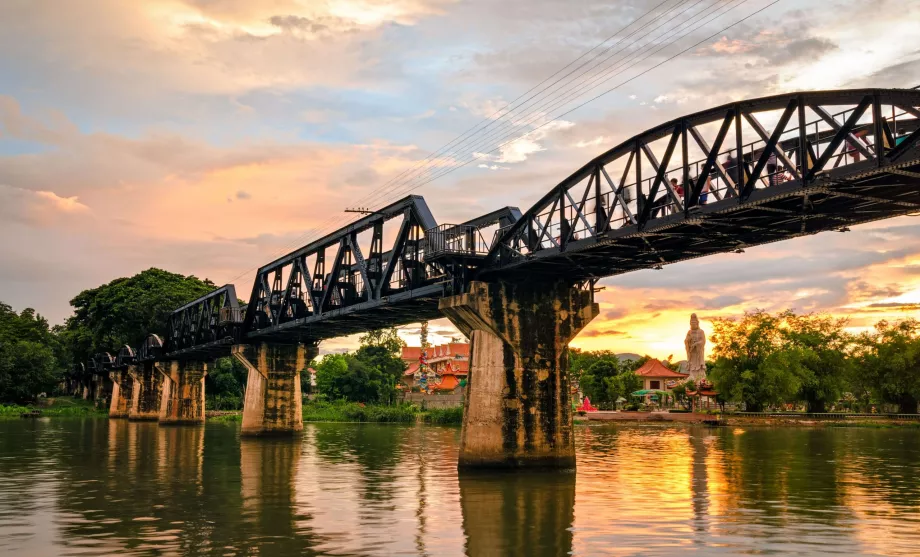
The city located in western Thailand, where the natural scenery complemented by waterfalls illustrates the famous bridge over the River Kwai associated with the famous history during World War II, is one of the most popular destinations for one- or two-day trips from Bangkok.
- Special offers on flights to Thailand
- Search for the cheapest accommodation in Kanchanaburi
We also recommend a trip to one of the nearby caves, and especially a train journey even further towards the terminus at Nam Tok, where the famous Death Railway runs.
The bridge over the River Kwai: facts and myths
The city of Kanchanaburi attracts up to 3 million tourists a year, who head here for its one main attraction: the railway bridge over the Khwae Yai River.
This was one of the most strategically important parts of the Thai-Burma railway during the Second World War, when Thailand was under Japanese control. After the lost Battle of Midway in 1942, the Japanese needed to replace the naval supply routes by land, and it was the line from Rangoon, Burma, to Bangkok, Thailand, that was to serve as an important transport artery.
The Kanchanaburi Bridge was made particularly famous by the French writer Pierre Boulle with his novel The Bridge on the River Kwai, which was made into a film of the same name in 1957. Based on real events, Pierre Boulle created a fictional novel set in Kanchanaburi.
But what about the bridge over the River Kwai in real life?
A key bridge was indeed built in Kanchanaburi during the construction of the Thai-Burma railway, but it was originally wooden and stood about 100 metres upriver from the present-day bridge. No traces of the original wooden bridge remain.
A new reinforced concrete bridge in the present footprint was constructed from 1944, but was severely damaged by bombing in 1945 and the bridge as it stands today was not built until after World War II in the late 1940s and early 1950s.
Although the novel is set on the River Kwai, in 1942 the river flowing along the track a little further south was referred to as the "Khwae", or Kwai. The river over which the bridge was being built was then called the Mae Klong (not the Mekong).
When crowds of tourists began to flock to the area after the film Bridge on the River Kwai was released in 1957, there was frequent confusion that the bridge over the River Kwai was actually over the Mae Klong. Therefore, in the first half of the 1960s, it was decided to rename this part of the Mae Klong to Khwae Yai (Great Source River) and at the same time rename the original Kwai to Khwae Noi (Little Source River). The Mae Klong has since been referred to as the river up to the confluence of the two 'Kwai'.
To make matters worse, the famous film was not shot in Thailand at all, but near Kitulgala in Sri Lanka.
Thus, while the present-day bridge over the River Kwai does indeed cross the River Kwai today, at the time of the novel it spanned the Mae Klong River and looked quite different...
Death Railway and Tham Krasae Bridge
Perhaps an even bigger tourist magnet lies about 40 minutes by train from the bridge over the River Kwai. It was the section of the line between Kanchanaburi and the Burmese town of Thanbyuzayat that was the most challenging to build.
The construction of the line was carried out by local workers along with prisoners of war and the Japanese had no regard for any kind of safety. Due to the inhumane conditions and the harsh, muggy and hot climate, more than 90,000 Asian workers and up to 12,000 POWs (mainly British, Dutch and Australians) died during the construction of the Thai-Burma Railway.
The difficulty of construction is best illustrated by the Tham Krasae bridge, some 300 metres long, closely following the cliff above the River Kwai. It is the Tham Krasae Bridge with its nearby cave that serves as the biggest tourist attraction in the area.
A train stop is always located at either end of the bridge. You can always get off and on at both stops, so you can cross the bridge by train, then cross it on foot and return from the other side. You will have one hour and three quarters of clear time before the train travels from Tham Krasae to Nam Tok and back again. During this time you will have time to eat at the local market, take pictures of the nearby cave and possibly walk across the track to the other station.
If one short stop in an idyllic area of forests, fields and steep banks isn't enough for you, stay at the luxurious Suan Sai Yok Resort **** with rates from 44 eur or the folksy, fully furnished Saiyok River House, where you can stay from 10 eur per night.
Accommodation in Kanchanaburi
The trip from Bangkok can be done in a roundabout way, but for convenience we definitely recommend staying here for at least one night. If you want to explore the surrounding mountains a bit, feel free to stay longer.
There's a really great range of accommodation in the city, from cheap hostels to beautiful hotel resorts. Take a look at our specific tips:
- Kanchanaburi City Hotel *** - a cheap well rated hostel with rates from 26 eur per night just about 100 metres from the bridge over the River Kwai
- River Kwai View Hotel *** - the only hotel directly overlooking the Kwai Bridge with rates from 44 eur per night
- Dheva Mantra Resort ***** - luxury 5* resort about 1.5 km from the bridge in a very quiet part of town right on the river bank, reasonable rates from 59 eur per night
Transport to Kanchanaburi and train timetable
The town lies 145 km west of Bangkok and is easily accessible by car and public transport.
Train
Most tourists use the train for transport, as the ride itself on the Death Railway is one of the top tourist experiences. However, the main touristy part is just from Kanchanaburi over the Tham Krasae bridges to Nam Tok.
The journey from Bangkok to Kanchanaburi is flat and relatively uneventful, but brisk and very cheap. The downside is the frequency of connections, with only 2 services a day on the Bangkok (Thon Buri) - Kanchanaburi - Nam Tok route.
- Thon Buri (Bangkok) - Kanchanaburi station: the journey takes 2.5 hours and costs 100 thb
- Thon Buri Station (Bangkok) - Tham Krasae: the journey takes 3.5 hours and costs 100 thb
- Thon Buri Station (Bangkok) - Nam Tok: the journey takes 4.5 hours and costs 100 thb
- Kanchanaburi - Tham Krasae: the journey takes one hour and costs 100 thb
The price for foreigners is flat on this route and is 100 baht wherever you travel. Tickets cannot be booked in advance, but can be purchased at the station if boarding at Tham Krasae from the conductor. Payment can only ever be made in cash.
- Departures from Thon Buri towards Nam Tok: 7 :45 and 13:45
- Departures from Kanchanaburi towards Nam Tok: 6:05, 10:30, 16:20
- Departures from Nam Tok: 5:20, 12:55, 15:30 (the last connection only goes to Nong Pladuk station and not all the way to Bangkok)
- departures from Kanchanaburi to Thon Buri: 7:19, 14:48
- departures from Tham Krasae towards Nam Tok: 7:35, 11:48, 17:48
- departures from Tham Krasae towards Kanchanaburi: 5:57, 13:36, 16:10
For the latest timetables, please visit the official Thai Railways website railway.co.th, which is however only accessible from Thai IP addresses. However, the times change only minimally and if they do, it's only by a few minutes.
In Kanchanaburi, trains stop at two stations. The main Kanchanaburi station is in the centre of the city, but the more popular station for tourists is Saphan Khwae Yai, right by the bridge over the River Kwai, where all trains also stop.
Bus
Significantly busier transport will be offered by bus, or rather in most cases a minibus or van. From Bangkok to Kanchanburi there are twice hourly services throughout the day. The vast majority of services in Bangkok leave from Mochit Bus Station and also stop at South Bus Station (see Bangkok guide for more).
In Kanchanaburi, it stops at the main bus station, which is located in the centre of town about 3.5 km from the bridge over the River Kwai(see map for exact location).
There is no need to check timetables in advance. Buses/shuttles run every half hour. The first service from Kanchanaburi leaves at 4:00, the last at 19:00. From Bangkok, the first connection leaves at 5:00, the last one around 19:50.
Tickets to Bangkok cost 150 thb and are paid in cash at the ticket counter outside the platform.
What to see around
Discover all the places to see in Thailand.
Any questions left?
If you have any questions or comments about the article...

